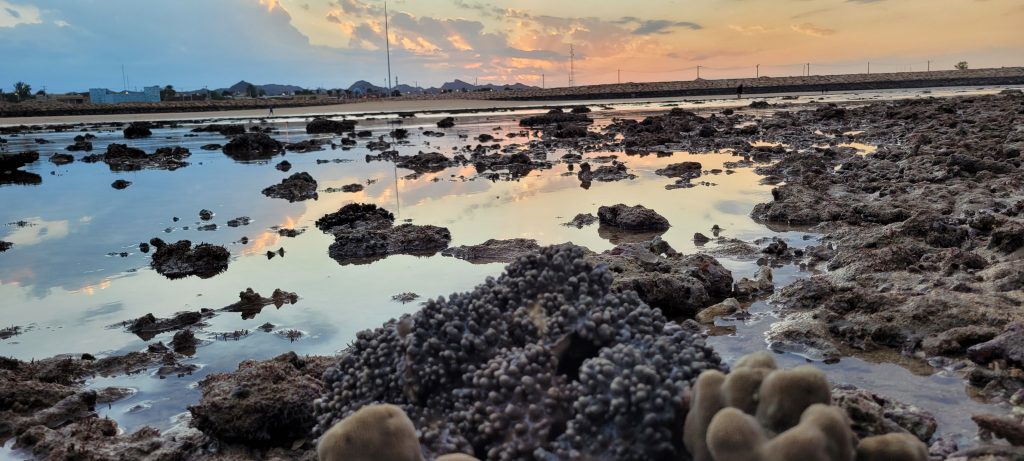For the next door of our Advent calendar, I’d like to take you on a journey to the Strait of Hormuz, one of the most politically significant waterways. It is located between the Persian Gulf and the Gulf of Oman in the northern Indian Ocean, and acts as a critical chokepoint for oil and gas transportation. But today, I’m going to focus on its biodiversity, which makes it even more special for the countries surrounding this strait. This narrow waterway, approximately 39 kilometers wide at its narrowest point, sees around 20-25% of global crude oil and a significant portion of liquefied natural gas (LNG) pass through it annually. The strait also features four islands, which have been central to my sampling of marine annelids Serpulidae since the start of my PhD in 2015.


The strait faces a range of environmental pollution issues due to its heavy traffic of oil tankers, industrial activities, and geopolitical tensions. The most common types of pollution in the region include oil and chemical pollutants, as well as marine litter and plastics. Despite these challenges, the high level of water circulation between the open ocean (Gulf of Oman) and the semi-enclosed Persian Gulf suggests that the islands may help preserve their biodiversity. In fact, I have personally found around 70% of the total serpulid species from the Persian Gulf and Gulf of Oman in these islands alone.

There are rich coral reefs surrounding each island in the strait, making them hotspots for species diversity. Unfortunately, human activities like the construction of numerous docks and the dredging and cleaning of sediments around these docks have contributed to the destruction of these coral reefs. I witnessed the devastation of a large coral population due to the construction of a military dock in 2019 in Larak Island. A significant number of corals, along with the many organisms dependent on them, were broken, shattered, and left stranded on the shore. However, when I returned in 2022, I was pleased to observe the natural emergence of small coral reefs in the same area. This indicates the high potential of these coastal areas for recovery. Nonetheless, these reefs still require human support, as they have become highly vulnerable.

Even in the absence of pollution and destructive activities, coral reefs have been severely affected by ocean warming in recent years. There have been reports of widespread coral bleaching in the Persian Gulf and adjacent regions in the last years. This issue plays a critical role in the biodiversity of the region. The Persian Gulf, due to its semi-enclosed nature, shallow depth, and high evaporation rates, and known as the hottest sea in the world during summers, is a unique environment forces many species to live at the edge of their tolerance limits. As a result, even a small change in temperature or environmental factors can lead to rapid population declines or even local extinctions of certain species.

Looking to the future of these coral reefs, we are reminded that nature, though resilient, is not invincible. The rebirth of small coral colonies in the wake of destruction offers a glimmer of hope, but it is a delicate and fleeting one. To ensure that these vibrant ecosystems thrive once more, it is up to us to act with intention and responsibility. The coral reefs of the Persian Gulf, as hotspots for marine organisms, are not just a wonder of nature; they are vital to the health of our oceans and the life they support. Protecting them means safeguarding a future where biodiversity continues to flourish, where our children can witness the beauty of the ocean in its full, living color. Let this be a call to action: for the reefs, for the species that depend on them, and for the generations yet to come.
- Maps from https://www.flickr.com/ and https://www.drishtiias.com/mains-practice-question/question-1518/pnt
![]()
